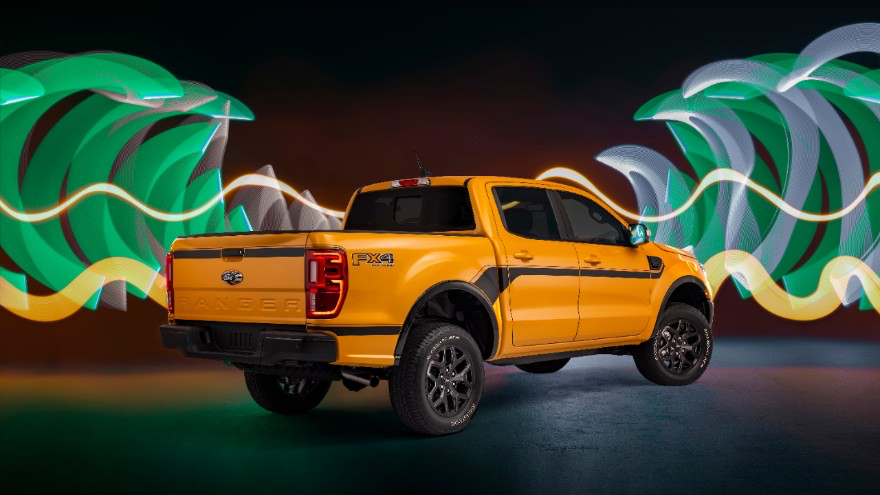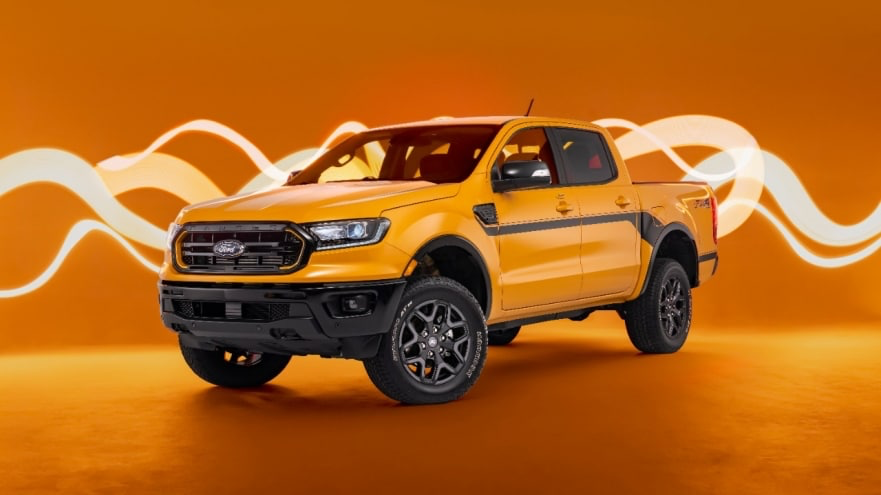DEARBORN, Michigan, September 1, 2021 – Ford (NYSE: F) Ranger fans, the Splash is back. The much-loved special appearance package from the 1990’s is making a comeback, reimagined for today and starting with the 2022 Ford Ranger Splash Package.
Splash will come in two styles, the Splash Package and Splash Limited Edition. The Splash Package will be available all model year and comes with body-side orange and black graphics and special 18-inch 12-spoke wheels finished in matte black. Ranger Splash includes orange grille nostrils, plus gloss black accents on the grille, bumpers, rearview mirror caps, wheel lip moldings and fender vents. The interior features exclusive seats with orange contrast stitching and unique carbon grain with tuxedo stripes – leather-trimmed in Lariat. Orange contrast stitching also appears on the steering wheel, gear shifter and parking brake boot. Lariat models get orange accent stitching on front and rear armrests and on the dash top.

The Splash Package can be combined with the FX2 or FX4 Package to add more off-road capability to its distinctive looks.
Ford will also bring a fresh dash of color by revealing Splash Limited Edition trucks every few months in a series of one-time-only hues with just a few hundred vehicles available. It also features 18-inch matte black wheels and a unique combination of exterior and interior content and finishes. The Splash – Snow Edition kicks off the first batch.
Ranger Splash Package will be available for SuperCrew models optioned in XLT and Lariat trim series, priced at $1,495 with deliveries starting at the end of the year. Ranger is proudly built at Michigan Assembly Plant in Wayne, Michigan.


